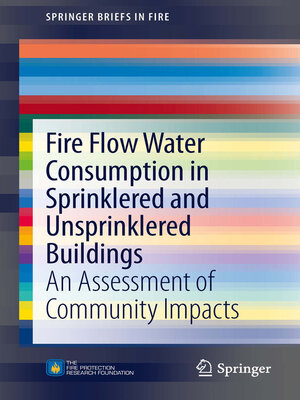Fire Flow Water Consumption in Sprinklered and Unsprinklered Buildings
ebook ∣ An Assessment of Community Impacts · SpringerBriefs in Fire
By Code Consultants, Inc.

Sign up to save your library
With an OverDrive account, you can save your favorite libraries for at-a-glance information about availability. Find out more about OverDrive accounts.
Find this title in Libby, the library reading app by OverDrive.



Search for a digital library with this title
Title found at these libraries:
| Library Name | Distance |
|---|---|
| Loading... |
Fire Flow Water Consumption in Sprinklered and Unsprinklered Buildings offers a detailed analysis for calculating the fire water demand required in buildings with existing and non-existant sprinkler systems. The installation of automatic sprinkler systems can significantly reduce the amount of water needed during a fire, but it requires water for commissioning, inspection, testing, and maintenance (CITM). This book provides an estimate of fire water used under both fire conditions, including CITM, to allow communities to develop fire water fees for both sprinklered and unsprinklered buildings that are proportional to the anticipated fire water usage. The types of buildings analyzed include residential (family dwellings as well as those up to four stories in height), business, assembly, institutional, mercantile, and storage facilities. Water volume was studied using guidelines from the International Code Council, the National Fire Protection Association, and the Insurance Services Office. Fire Flow Water Consumption in Sprinklered and Unsprinklered Buildings is intended for practitioners as a tool for analyzing water consumption in fire situations and for providing them with key information on the best types of water systems in a variety of buildings. Researchers working in building planning and safety will also find the book valuable.







